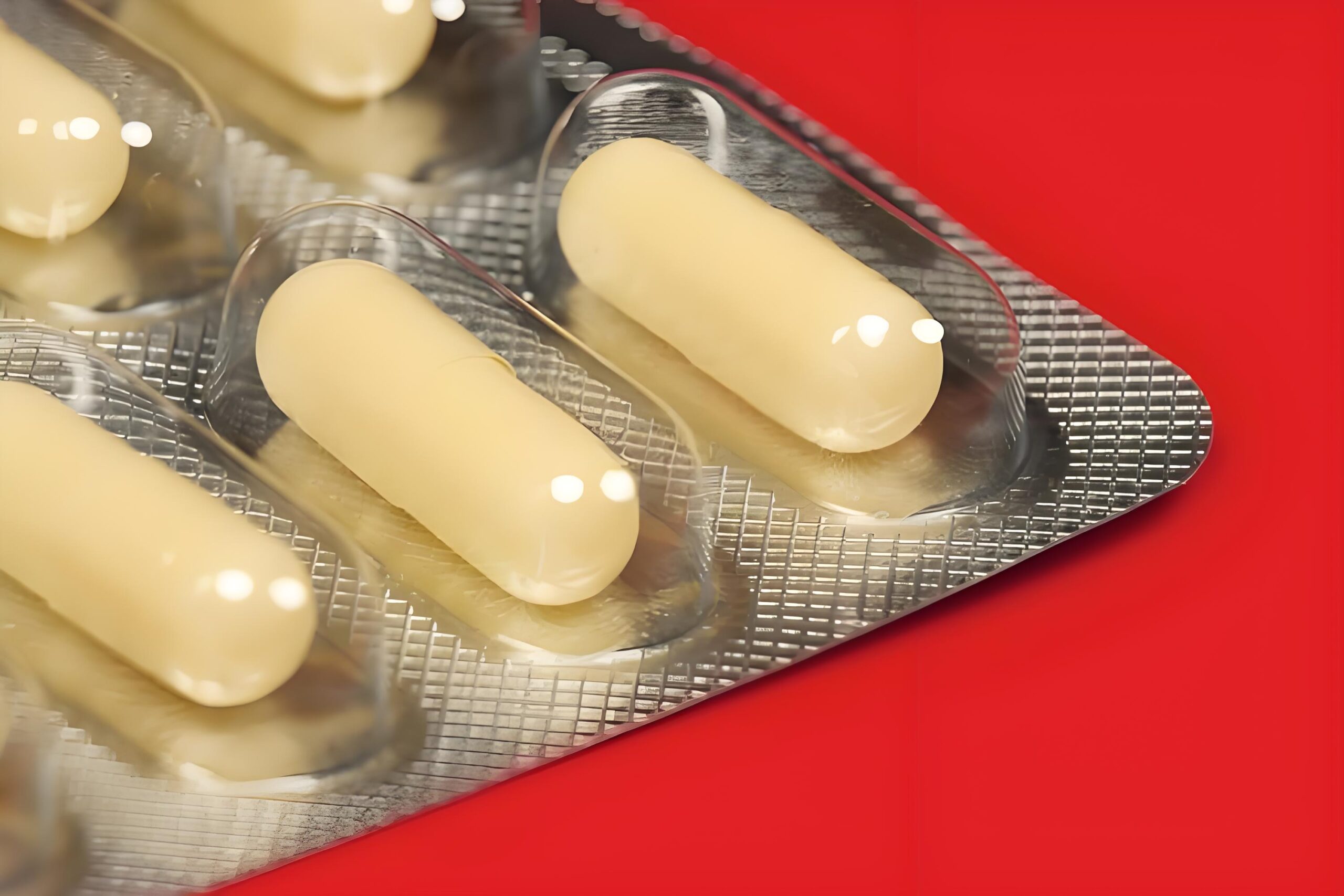Categories
- News From Haomei (314)
In the pharmaceutical industry, blister packaging is a common packaging method for medicine (especially tablets and capsules). Its core function is to protect drugs from environmental influences (such as oxygen, moisture, light, and microorganisms) while facilitating storage and use. Blister packaging typically consists of two components: a base material (which forms the blister and holds the drug) and a lid material (which seals the blister).

The types of blister packaging materials and characteristics are as follows:
I. Blister base material (material that forms the cavity)
The base material must possess good formability (thermoplasticity) and a certain degree of mechanical strength, while also providing various barrier properties (oxygen, water, and light) depending on the drug’s stability requirements. Common types include:
1. Polyvinyl Chloride (PVC)
– Features: Low cost, excellent formability (easily stretched into a blister after heating), and high transparency make it one of the most commonly used base materials.
– Limitations: Poor barrier properties (high oxygen and water vapor transmission), requiring use with other materials or for drugs with high stability.
2. Polyvinylidene chloride (PVDC)
– Features: Excellent barrier properties (barrier to oxygen, water vapor, and odors far superior to PVC), good chemical resistance, and outstanding moisture and oxidation resistance.
– Applications: Often laminated with PVC in the form of a coating (such as PVC/PVDC composite film), it combines the formability of PVC with the high barrier properties of PVDC and is used for pharmaceuticals requiring high moisture and oxidation resistance (such as tablets and capsules that are prone to moisture absorption).
3. Polyethylene terephthalate (PET)
– Features: High mechanical strength (impact and tear resistance), good temperature resistance (can withstand high-temperature sterilization), high transparency, and barrier properties superior to PVC but slightly inferior to PVDC.
– Applications: Suitable for applications requiring higher strength or temperature resistance. It can also be laminated with other materials (such as PET/PVDC) to further enhance barrier properties.
4. Polypropylene (PP)
– Features: Excellent chemical resistance, excellent low-temperature toughness, moderate cost, and barrier properties similar to PVC.
– Applications: Less commonly used as a standalone substrate, it’s more commonly used in composites with other materials (such as PP/PVDC) or for pharmaceuticals requiring high chemical stability.
5. Cold Forming Aluminum
– Features: Made from multiple layers of aluminum foil (such as aluminum foil/polyethylene), it can be mechanically stamped without heating. It offers exceptional barrier properties (completely blocking oxygen, water, and light) and excellent sealing.
– Applications: Used for pharmaceuticals requiring extremely high stability (such as biologics, highly active drugs, and photosensitive drugs), but the cost is relatively high.
2. Blister Lid Material (Material for Sealing the Blister)
The lid material of blister packaging must possess excellent heat-sealability (tightly bonded to the substrate), be easy to tear (for convenient patient access), and provide a secondary barrier function. Common types include:
1. Pharmaceutical Aluminum Foil
– Structure: Typically 0.02-0.03mm thick pure aluminum foil with a treated surface (one side coated with heat-seal adhesive for heat sealing to the substrate; the other side coated with a printed layer for information labeling).
– Features: Excellent barrier properties (oxygen, water, and light barriers) and good sealing, making it the most commonly used lid material.
– Applications: Suitable for use with substrates such as PVC, PVC/PVDC, and PET, it is suitable for most pharmaceuticals.
2. Aluminum-Plastic Composite Film
– Structure: Aluminum foil is laminated with plastic film (such as PE or PET), combining the barrier properties of aluminum foil with the flexibility of plastic.
– Features: Better tearability than pure aluminum foil, suitable for applications requiring easier opening.
3. Paper-Aluminum Composite Film
– Structure: A composite of aluminum foil and paper, with the paper providing stiffness and printability, and the aluminum foil ensuring barrier properties.
– Features: Lower cost, but slightly inferior to pure aluminum foil in barrier properties, making it less suitable for pharmaceuticals requiring high stability.
The choice of types of blister packaging materials should be determined based on a comprehensive consideration of the drug’s stability requirements (such as moisture resistance, oxidation resistance, and light protection), cost, and application scenario. PVC + pharmaceutical aluminum foil is the most economical and versatile combination. For pharmaceuticals requiring high barrier properties, a PVC/PVDC composite substrate + aluminum foil is often used. Highly sensitive pharmaceuticals often utilize a high-barrier combination of cold-stamped aluminum + aluminum foil.